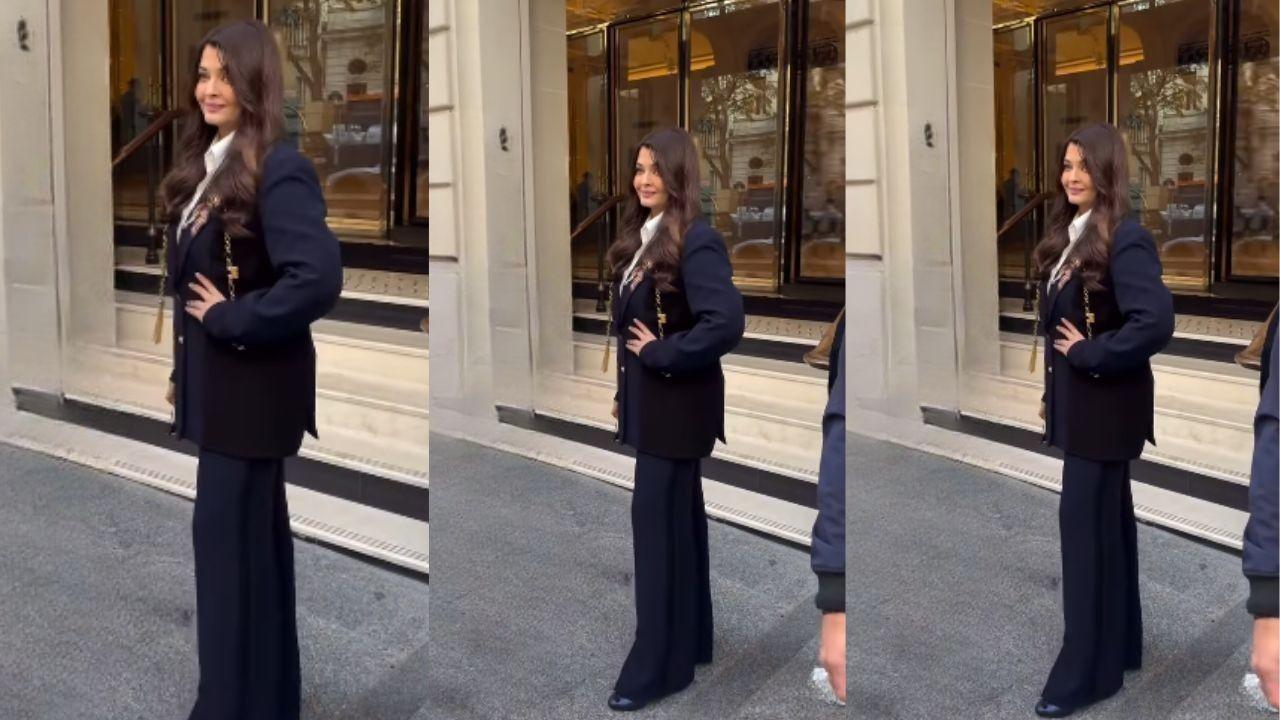
Join 10k+ people to get notified about new posts, news and tips.
Do not worry we don't spam!

Post by : Anish
Taylor Swift’s The Life of a Showgirl (the title track from her 12th studio album) unfolds as a layered story of performance, identity, and the cost of fame. At first glance, it conjures images of glamor, sequins, spotlights, and the electric thrill of stardom. Beneath that surface, however, lie intimate revelations: the sacrifices, the vulnerabilities, and the emotional labor required to maintain a persona.
In this article, we trace the song’s narrative arc, explore its thematic dimensions, analyze its lyrical and musical strategies, and place it within the broader context of Swift’s evolving artistry.
From the earliest preview coverage, critics and fans noted that The Life of a Showgirl is not just a catchy title — it functions as a persona, a metaphor, and a confessional lens. According to Elle, the song portrays a character named Kitty, a glamorous, high-visibility figure whose outer life of showiness hides an inner struggle.
Kitty’s backstory, revealed in snippets across the lyrics, includes parental betrayal, emotional neglect, and a compulsion to adopt a dazzling public identity to mask wounds. She becomes the archetypal showgirl: she dances, she dazzles, she entertains — but is haunted by the void behind the sequins. Swift uses Kitty as both a muse and a mirror, with parts of her narrative echoing Swift’s own experiences in the public eye.
By the song’s end, the narrator — who once saw Kitty from the outside — attains a similar spotlight. Now understanding the toll, she crosses into a more empathetic stance. The character of Kitty shifts from object to subject. The glamorous facade remains, but the song nudges listeners to question whether the showgirl ever gets to rest.
One of the song’s central tensions is between appearance and truth. The showgirl is compelling, cinematic, and thrilling — but Swift insists we remember that the lights, the movement, the applause all occur within a constructed frame. The glamour is often more smoke than substance.
The showgirl identity is not purely aesthetic; it becomes a mode of survival. When childhood is haunted by betrayal or abandonment, performance becomes the defense mechanism — a way to reclaim control, enforce attention, or generate worth. The song interrogates whether that survival becomes a kind of imprisonment.
Even in the presence of adoring crowds, The Life of a Showgirl suggests a yearning for real connection, vulnerability, and healing. Fame gives you a stage — but it doesn’t always grant you authenticity behind closed doors.
The shift from the narrator as observer to participant underscores a moral turn. It’s not just about showing up in dazzling clothes. It’s about reckoning with the toll. The song suggests empathy — that to wear the costume is to absorb its weight.
Swift has long been praised for her ability to blend vivid storytelling with emotional intimacy. In The Life of a Showgirl, she continues this tradition but sharpens it in some ways.
Imagery & Metaphor: The song likely uses theatrical motifs — spotlights, curtains, sequins, stage names — as metaphors for identity. Each glittering element echoes a deeper emotional note.
Contrast & Juxtaposition: The contrast between the flash of performance and the silence backstage is central. The margins between public and private life become a key battleground.
Narrative Progression: The lyrical structure moves from external descriptions (Kitty’s exterior life) to internal insight (her wounds, her drive) to a repositioning (narrator enters that world).
Musical Underpinnings: While the full sonic details may only be fully known upon release, early commentary suggests The Life of a Showgirl is part of Swift’s return to “straight-up pop,” balancing infectious hooks with emotional weight.
The duet with Sabrina Carpenter (on the title track) adds another dimension: a shared voice. It suggests that the showgirl identity isn’t singular — that multiple voices, multiple selves, can carry its burdens.
The Life of a Showgirl is the final track of the TS12 album, and the only collaboration on it. Swift has mentioned that she recorded much of this album during her Eras Tour — sometimes flying into Sweden between shows to lay down tracks.
That period — the grind of touring, the pressure of maintaining momentum, and the para-intimacy of public life — seems to inform the album’s emotional core. Swift herself said that The Life of a Showgirl isn’t just about what happened onstage, but what she was going through offstage: “behind the scenes in my inner life.”
The song also gestures toward her evolution as an artist. After The Tortured Poets Department, which she described as a “data dump” of emotional intensity, TS12 appears to be her attempt to balance mood with melody, introspection with pop appeal.
In this sense, The Life of a Showgirl functions not just as a closing track, but as a summation — a statement of perspective, self-awareness, and grit.
As is common in Swift fandom, many fans and critics have already begun theorizing:
Some interpret Kitty as a symbolic figure standing for any artist in the spotlight — not necessarily a literal person.
Others draw parallels between the showgirl figure and Taylor’s own experiences: navigating labels, fame, public scrutiny, and emotional cost.
The collaboration with Sabrina Carpenter is seen by some as bridging two generations of pop women navigating identity and image.
Because TS12 is tightly controlled (only a handful of people reportedly heard the full album ahead of release), the song may include hidden references or Easter eggs that deepen with repeated listens.
The contrast between costume and skin echoes longstanding Swift themes: identity, reputation, masks she has worn, and the losses in shedding them.
Cultural Myths & Glamour
The showgirl is a cultural mythos: from Moulin Rouge to Las Vegas to cabaret stages, it symbolizes spectacle, fantasy, seduction. Swift taps into that imagery while deflating it — reminding us behind the glitz is human fragility.
Public Persona as Performance
In an age where public figures curate identities on social media, the idea that life is performance is more literal than ever. The song reflects that contemporary tension.
Gender & Labor
The showgirl has always been coded feminine — a body, an image, a spectacle. By claiming it, questioning it, and owning it, Swift engages in a subtle feminist intervention: the showgirl is not merely object — she is also author, survivor, interpreter.
Empathy for the Performer
The song’s shift in narrative invites listeners to feel, not only admire. It humanizes the artist, making space for fatigue, longing, and imperfection.
“The Life of a Showgirl” is not just a song, but a narrative fulcrum. It homes in on the paradox of a life in lights: the glamour and the drain, the mask and the truth. Through lyrical craftsmanship and emotional candor, Taylor Swift invites us backstage — not to expose, but to understand. The showgirl remains dazzling, but she is no longer unknowable.
When the album arrives and full lyrics are available, listeners will likely uncover even more layers of reference, resonance, and emotional tug. Until then, this song stands as a majestic, haunting coda: a final curtain, and a whispered confession.
This article is an interpretation and critical reading of Taylor Swift’s song The Life of a Showgirl. It reflects analysis based on available public information, media commentary, and textual inference. The artist’s own intent may differ, and any speculation about characters, references, or symbolism is offered for discussion rather than definitive conclusion.










JioHotstar Launches ‘Pitch To Get Rich’ Reality Show for Fashion Startups
JioHotstar’s new show ‘Pitch To Get Rich’ features 14 fashion startups competing for Rs 40 crore fun

Kantara Chapter 1 Box Office Day 1 Rishab Shetty Film Hits ₹60 Cr
Rishab Shetty’s Kantara Chapter 1 collects ₹60 crore on Day 1, breaking records across India with hu

FIA Declares Heat Hazard for Singapore F1 Race Due to Extreme Heat
FIA applies heat hazard rule for Singapore Grand Prix as high heat and humidity challenge F1 drivers

Trapeze Artist Dies After Fall at German Circus Show
A 27-year-old trapeze artist died in Germany after falling during a circus show. The tragic accident

Dhanashree Verma Reveals Yuzvendra Chahal Cheated Early in Marriage
Dhanashree Verma opens up on her divorce from Yuzvendra Chahal, revealing he cheated within months o

Aishwarya Rai with Aaradhya Spotted in Paris Ahead of Fashion Show
Aishwarya Rai Bachchan and daughter Aaradhya spotted in Paris ahead of L'Oréal Paris Fashion Week, d